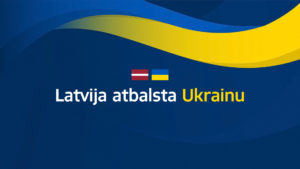Current Latgale has been inhabited by the Latgalls since ancient times. The River Daugava has been an ancient trading route; hence the Latgalls had contacts with the Romans, the Byzantines and the Arabs.
Before the Latgalls came to the territory of Latvia in the 5th – 7th centuries, Finno-Ugric nations (the ancestors of modern Estonians) had lived there, as multiple barrow burial fields prove. In the early 12th century the Latgalls lived on the right bank of the River Daugava – in modern Latgale and Vidzeme, except its western part, i.e. in the eastern area of the territory towards the modern border of Latvia.
Early feudal states with relatively high social organisation – Tālava, Koknese, Jersika, Adzele, hillforts, intensive trade, and rich burials indicate high welfare, which was interrupted by the invasion of German orders and gradual colonisation in the 12th – 13th centuries. The Latgalls, the Cours, part of Zemgalians, and the Livs came to Livonia. Russian feudal states Pskov, Novgorod and Polotsk captured eastern lands of the Latgalls, and their southern lands came under the rule of Lithuania. The Latgalls retained their language for more than one century, as place-names and historical documents show, however they assimilated gradually in foreign environment.
Disintegration of Livonia resulted in wars for the inheritance, with Sweden, Russia, Poland participating, which alternated with peaceful periods and havoc. Vidzeme inhabited by the Latgalls came under the rule of Sweden, and Latgale began to be governed by Poland. The difference in development of societies and interests of both countries led to differences in territorial development. Latgale became an outlying district of Poland with frequent wars, while the Golden Age of Swedes lasted in part of Vidzeme.
The Reformation and later consolidation of Lutherism in Vidzeme and Catholicism in Latgale in the second half of the 16th century, impacting on cultural differences, continued to deepen the differences. For more than one century social processes were determined by German Lutheran secular culture in the west and Polish Catholic clerical culture in the east, which contributed to substantial differences and laid a real social, economic, cultural and ethnic borderline between the Northern Europe and Eastern European, and split one nation in two.
In Latgale serfdom was abolished 50 years later than in Vidzeme. After the Polish unrests a ban on Latin alphabet was invoked, that delayed cultural and educational work and national awakening for 40 years. Despite that, Latgalls preserved their language and culture, in which Catholicism played important role. During this time Latvian nation and language were formed without Latgalls, which are 30% of Latvians. In the beginning of the 20th century knowledge and interest of Latvians about Latgale was rather small. Only thank to the work of Latgallian awakening activists in the beginning of the century was Latgale discovered by Latvia. After the Latgallian congress in 1917 in Rezekne Latgale united with other counties.
Many socioeconomic changes happened in 20s and 30s – development of school network, liquidation of village system, cultural activities that had a great impact in the development of the county. On the other hand Latgallian aspirations for a cultural autonomy and recognition of their language were unfulfilled; overpopulation of rural areas and the low economical basis caused people to migrate to other counties, thus making Latgallians servants in their own country, with the corresponding attitude from other Latvians, which was even more cultivated after World War II.
After the restoration of the independence a new period of national awakening began, which is characterized by publication of literature in Latgallian, awareness of own culture and history, investigation of heritage of Latgallians from other countries, then followed by economical restructuring, which is characterized by shutdown of big enterprises, changes in employment structure, change of form of ownership…
In Latvia two spelling traditions have appeared historically: the Latvian literary or common national language and the Latgalian literary language as a regional phenomenon. The Latgalian spelling emerged as a result of administrative division of the Latvian ethnic territory, when in the early 17th century the eastern part, or Latgale of that time, remained under Polish rule and the impact of Catholicism, while Vidzeme was under Swedes and the Lutheran impact.
The literary heritage written in the Latgalian language is very rich – sacral literature, calendars, newspapers, journals, poetry and short stories. Before World War II, there were about 2000 Latgalian publications and the total circulation of published works was 10 million copies. In Soviet times, the Latgalian language was used very scarcely. In their turn, written Latgalian traditions continued in exile (in Germany, the US, Canada, Sweden), where nearly 120 different publications were issued. Many authors focused on study of the past of Latgale. After Latvia restored its independence, the interest in Latgale has grown, periodicals and fiction are published in the Latgalian language, cultural and historical research continues.

